Athens is a vibrant city with countless things to see and do during your vacation. While it is often associated with traditional tourist attractions like the Acropolis and other ancient landmarks, and many people enjoy Greek food in the city’s unique restaurants or tavernas, the Athens Riviera is often overlooked. This is either because visitors are unfamiliar with it or haven’t spent enough time in Athens to explore beyond the main sights. However, the Athens Riviera is becoming an increasingly attractive destination for tourists. In addition to well-known spots like Lake Vouliagmeni and Cape Sounion, exciting new attractions have opened, including the Ellinikon Experience Park and Experience Center. These sites are part of the large-scale, innovative urban regeneration plan known as Ellinikon, which promises to further enhance the appeal of the area for visitors in the near future.
The green postindustrial retreat of Athens
If you’re feeling overwhelmed by the bustling city or simply seeking peace and balance, the green retreat of Athens offers a perfect escape. Skillfully integrated into the natural landscape, the Ellinikon Experience Park provides a unique and immersive experience that blends nature, culture, and entertainment. Spanning over 5,700 m2, the park features beautiful gardens, walking paths, and open-air venues for concerts and events. Visitors can stroll through the park while enjoying stunning views of the surrounding mountains. Art installations and sculptures are thoughtfully placed throughout, adding an artistic element to the natural environment.
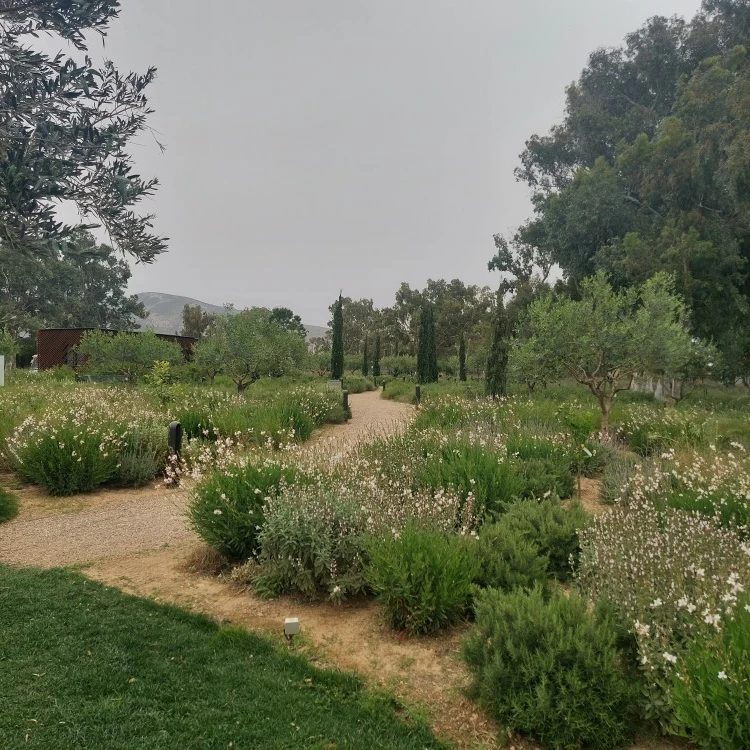
Among the park’s highlights are the Water Maze, an interactive fountain with hundreds of water jets; the Zen Garden, filled with Mediterranean flora and calming water features; an outdoor fitness area; and a children’s playground.
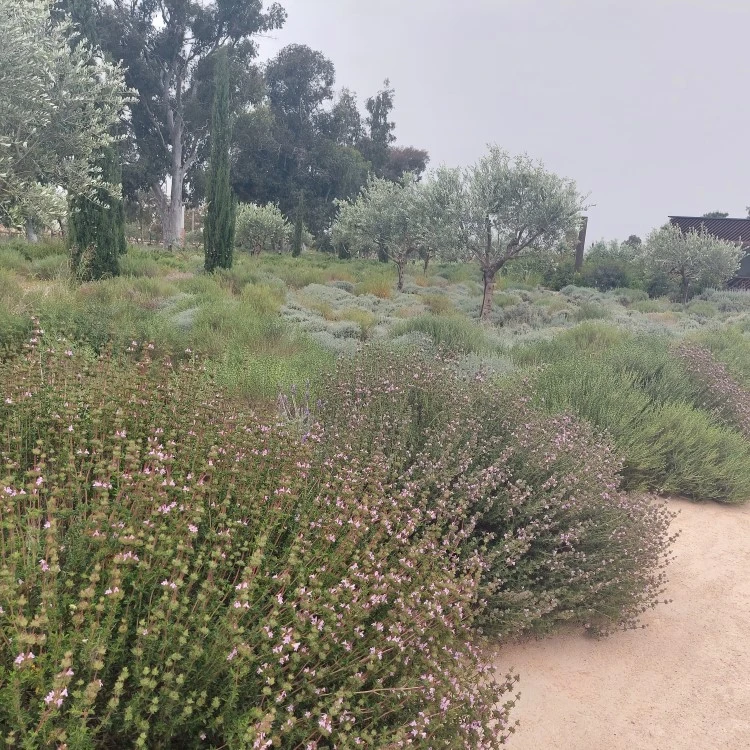
The park is not only a new experience for Greek citizens but also a symbol of transformation. Built on the site of the former Hellinikon Airport, it introduces Greece to the concept of post-industrial landscapes. According to Thomas Doxiadis, a Greek architect and founder of the landscape firm Doxiadis+, which designed the project, the park reflects “a landscape of abandonment, where nature has taken over”. The park’s design is rooted in sustainability, with soil recultivation, the use of native plants, and recycled materials playing key roles. As T. Doxiadis explains, “the core notion of the project is Symbiosis, where the design proposal satisfies the needs of humans and nature for both worlds to live in equilibrium and complement each other. The proposal sets an example of how future well-being can take place”.
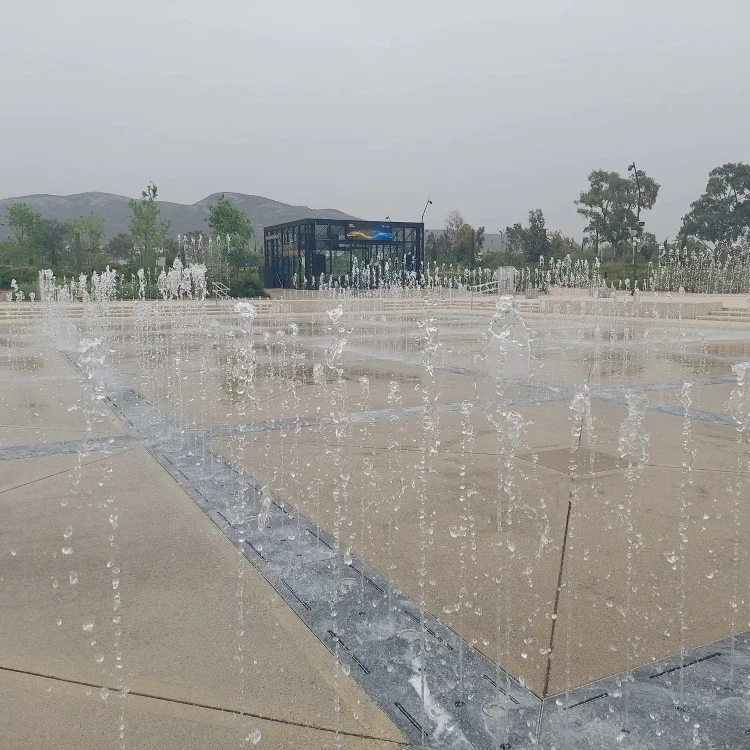
In the park’s construction, recycled materials from the original airport were utilized, including slabs of cast concrete repurposed for walls, benches, and even a sculpture garden, as well as asphalt from the airport runways. The Water Maze was built on the old concrete “floor”, where visitors can hop through water fountains illuminated by dynamic light displays.
Preserving traditions and promoting inclusiveness are key sustainability principles that guided the park’s creators. They drew inspiration from Greece’s aviation and military heritage. The park’s design incorporates two aircraft hangars, repurposed as the Experience Center and an airplane museum, while wooden aircraft elements have been integrated into the children’s playground.
The Experience Center is one of the main attractions at the Ellinikon Experience Park. This state-of-the-art facility offers an immersive exhibition spanning over 1,800 m2, dedicated to the Ellinikon urban regeneration plan. It features five zones where visitors can explore the historical roots of the site’s development and engage with immersive installations showcasing the architectural and engineering innovations at the heart of the project. Visitors can participate in hands-on activities, virtual reality experiences, and workshops led by experts.
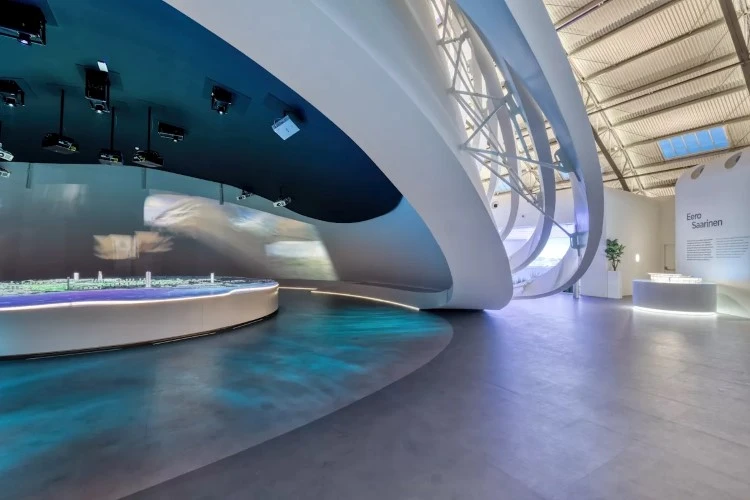
Notably, the Ellinikon Experience Park has been awarded SITES Gold-level international certification, recognizing it as a model urban park that meets high sustainability standards. It is the first project in the “new construction” category in Europe to receive SITES certification.
Unpacking the complexities of the urban jungles of Athens
As mentioned earlier, the Experience Park is part of the largest groundbreaking urban regeneration project in Europe, valued at EUR 8 billion. Despite improvements in Greece’s economy, the ambitious Ellinikon project is being carried out amidst challenging economic and social conditions. These challenges stem not only from Athens’ development as a major city and the capital of Greece but also from broader national and global issues.
One key factor is Athens’ geographical limitations. The city is confined by the Pikilo Mountain to the east, the Hemmitos Mountain to the west, and the southern waterfront, while the Pentelikon Mountains block any significant urban expansion to the north. Unplanned urban development has led to Athens becoming chaotic and uncomfortable, bearing many characteristics similar to large cities in the developing world. Decades of mismanagement of natural resources have resulted in their depletion, forcing the city to rely heavily on imported water, food, and energy. In addition, Athens faces challenges related to waste recycling and the lack of green space development.
A glance at the map of Athens reveals the uneven distribution of parks and green spaces across the city’s seven districts, with limited land available for new parks. Many existing green spaces require infrastructure upgrades, and large green areas remain difficult to access, especially for vulnerable populations such as the elderly and children. The lack of financial and human resources, along with widespread bureaucracy, corruption (with Greece scoring 52 on the Corruption Perceptions Index in 2022, compared to 87 in Norway and 84 in Finland), and complex administrative procedures, exacerbates these challenges.
Greece also faces serious migration issues, which gained global attention during the 2015 European refugee crisis when 856,000 migrants used the Greek islands near the Aegean coast of Turkey as a transit point to enter the EU. First-generation migrants now make up 9.1% of the population in Attica, higher than the national average of 6.4%, with even greater concentrations in the municipality of Athens. The majority of these migrants in Attica (81%) are from non-EU countries. Many migrants and refugees live in poor conditions in areas such as Athens’ downtown Pedion Areos gardens, former Olympic infrastructure, and the abandoned Hellinikon airport.
Greek authorities have approved several official documents to address urban development issues, including a regional program for sustainable development adopted by the Ministry of Environment and Energy in 2014, the Master Plan for Athens and Attica, and the Strategy for Sustainable Development of Athens until 2030. These plans aim to green the city, protect natural ecosystems, promote smart urban landscape and water use, improve infrastructure, address immigration issues, and enhance trust in public services. However, the mere existence of these plans does not guarantee the resolution of these issues.
Due to the lack of financial resources, the private sector has taken on a critical role in improving the urban environment. Municipal authorities have contributed to the gentrification of central districts, which have untapped tourism and investment potential, by offering significant tax breaks and business incentives. While the situation in Athens is gradually improving, many challenges remain, preventing the city from becoming a modern, comfortable place to live
Groundbreaking project of urban regeneration for sustainable future
The Ellinikon urban regeneration project is a prime example of private initiative aimed at transforming the abandoned Ellinikon airport, which closed in 2001, into a green oasis. The development will feature residential areas, shopping districts, workplaces, sports facilities, leisure and entertainment options, and cultural activities, all centered around a world-class Metropolitan Park. The Ellinikon project covers a total area of 6,200,000 m2, with 600,000 m2 dedicated to green spaces, 2,509 hectares for urban living, a 1 km landscaped public beach, 65 building zones, and 50 km of scenic walkways and cycle tracks. The park will surpass London’s Hyde Park (250 hectares), with over 100 hectares additionally allocated for housing and office space.
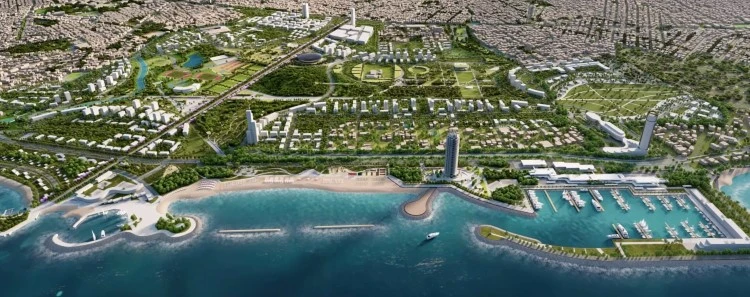
Residential facilities in the project include Little Athens, a new neighborhood with modern homes and apartments, along with Cove Villas, Cove Residences, and hotel residences. Two of the tallest buildings in Southern Europe are also planned: the Riviera Tower and the Hard Rock Hotel and Casino. The latter will feature a casino, guest rooms, a rooftop terrace, and a conference center. The Riviera Tower, designed by Foster + Partners, will be a 200-meter-tall, 50-floor residential skyscraper, poised to be one of the most exciting attractions in the Ellinikon area and all of Greece. It is set to be one of the greenest high-rise buildings globally, incorporating eco-friendly practices and international safety standards. Sustainable materials and smart home technology will be used to reduce energy consumption, improve water management, and minimize carbon emissions, while enhancing the local microclimate. The design is tailored to its location, with naturally ventilated interiors and panoramic views of the coastline in every apartment.
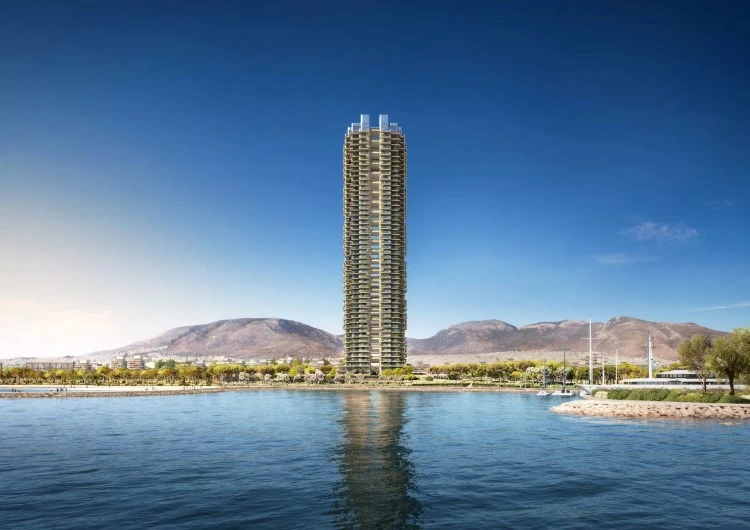
Ellinikon will embody the principles of a smart and sustainable city, based on the concept of a “15-minute city” where residents, visitors, and workers can live, work, exercise, and enjoy leisure activities. The project will feature sports complexes, educational institutions, cultural venues, beaches, marinas, medical facilities, shopping malls, hotels, and more. The construction strategy focuses on reusing 100% of materials from the old airport, decontaminating soil for reclamation, and using reclaimed water to meet the irrigation needs of public parks.

The Hellinikon Metropolitan Park is designed to minimize energy consumption, promote biodiversity, and encourage sustainable transportation. The project includes stormwater management, air quality improvement, and waste reduction initiatives. Advanced technologies, such as IoT, AI, 5G, and high-speed fiber-optic networks, will be used to enhance urban living and management, incorporating features like smart lighting, energy management systems, waste sorting systems, sensors, underground networks, public Wi-Fi, and shared e-bike and scooter systems.
Ellinikon is expected to bring significant economic, social, and cultural benefits to Athens and Greece. Designed as a greenway, the park will unite surrounding districts and provide residents with access to its facilities. The project is founded not only on preserving and developing historical traditions but also on inclusivity. As a testament to this, the first building constructed in Ellinikon was for people with disabilities, aimed at improving their quality of life.
A key feature of the Ellinikon project is the preservation and integration of historic buildings and structures, including the old airport terminal. As mentioned earlier, the airport’s hangars and other structures will be repurposed for cultural and recreational uses, giving the area a unique character.
Ellinikon will create thousands of jobs during its construction and attract millions of visitors annually once completed, stimulating investment in the surrounding areas. Ultimately, the Ellinikon project represents a bold vision for the future of Athens and Greece, aiming to enhance the quality of life for residents, attract tourists, boost the local economy, and set a new standard for integrated and sustainable urban living. It has the potential to become a model for urban development projects worldwide.
Navigating development with a clear vision
The Ellinikon project has faced some controversy and delays over the years, including legal disputes. However, the Greek government is supporting its progress, with the goal of completing the project in the coming years.
The Ellinikon urban regeneration project is led by the Greek holding company Lamda Development, which specializes in real estate development, investment, and management. The project involves collaboration with numerous partners, with Lamda Development serving as the primary driving force behind its implementation. It’s no surprise, then, that the company’s CEO, Odisseas Athanasiou, is often referred to as “Mr. Ellinikon”. Known for his sharp mind and clear vision, Athanasiou understands the key factors for success in both business projects and national initiatives. Crucially, his drive for development and strong will helped ensure that the large-scale Ellinikon project finally began after many years of discussions and preparations. For these reasons, Athanasiou could also be aptly called the “Captain of Development”.
Lamda Development emphasizes its commitment to sustainable development and improving quality of life. When describing the Ellinikon project, they highlight their focus on these principles: “Here, in Athens, we’re creating a place that stands for progress, where lives can be truly well lived in an amazing setting. And where new generations will find greater opportunities”. It is obvious that the company is led by innovators-patriots who are not indifferent to the future of their country: “We are crafting unforgettable experiences and shaping a more sustainable future for all. Our projects not only bolster the Greek economy but also attract investments both locally and internationally, fostering job creation. Every day, we endeavor to elevate standards, thus amplifying Greece’s global presence in our ongoing creative journey”.
Overall, thanks to the efforts of the company and its project partners, who successfully combined the principles of sustainability, culture, and community engagement, the Ellinikon project has the potential to significantly transform the image of Athens. It could become a beacon of hope for a more sustainable and inclusive future, not only in Greece but also globally.


